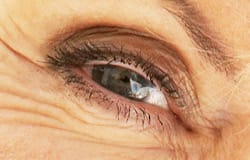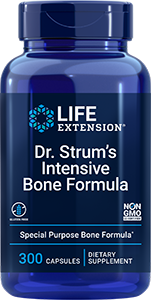 | February 4, 2011 | Free radicals implicated in common eye disease | | The American Journal of Pathology's November, 2010 issue reports the outcome of research conducted by Ula V. Jurkunas, MD and her colleagues at the Schepens Eye Research Institute in Boston which implicates free radical damage in the development of Fuchs endothelial corneal dystrophy (FECD), a potentially blinding disease characterized by the programmed cell death of epithelial cells in the eye's cornea (the clear tissue in the front of the eye) which is the most common reason for corneal transplant surgery. Free radicals are unstable molecules that damage a variety of tissues, resulting in many of the diseases and conditions associated with aging. While some free radical damage is inevitable, increasing the body's levels of antioxidants, which bind with and neutralize free radicals, can help moderate this damage. Although genetic factors in FECD have been identified, mechanisms involved in its development were unclear. For their study, Dr Jurkunas and her associates compared corneal epithelial tissue samples from FECD patients who received corneal transplants to samples derived from subjects who did not have the disease. They discovered a reduction in the level of antioxidants in the majority of FECD specimens and increased DNA damage. "Our discovery is significant, because it gives us the first hope for slowing the progression of the disease," stated Dr Jurkunas, who is a corneal surgeon at Massachusetts Eye and Ear Infirmary in Boston. "If we can identify how free radicals are involved in this and what antioxidants can fight them, we can create a regimen that can help protect the cornea." The authors conclude that "This study provides evidence that oxidative stress plays a key role in FECD pathogenesis." The finding is significant for the nearly 4 percent of the population over the age of 60 who are affected by FECD. In addition to supplementing with a multivitamin, Dr Jurkunas suggests that patients at risk for the disease consume more leafy green vegetables and wear ultraviolet protection. | |  |  | | The cornea is the transparent covering through which light travels. On all sides of the cornea, covering and shaping the rest of the eyeball, lies the sclera, which is made of tough connective tissue. Since the cornea helps focus images into our eye, maintaining clarity is essential. Both infection and injury can produce scars that leave the cornea cloudy. Clouded corneas reduce the amount of light that enters the eye, resulting in decreasing stimulation of the photoreceptors and dim vision. Scarring can also affect the shape of the cornea, producing astigmatism. Severe corneal scarring, or keratoconus, is one of the reasons for a corneal transplant operation. As is the case with other organ systems, maintaining healthy vision and reducing the risk of an eye disease rely on paying regular visits to a physician and taking preventive steps, including nutritional supplementation, to support optimal function. The following supplements have been shown to support general eye health: - Omega-3 fatty acids—1400 milligrams (mg) EPA and 1000 mg DHA daily
- Lipoic acid—150 to 300 mg daily
- Vitamin C—1 to 3 grams (g) daily
- Vitamin B complex—at least 50 mg of each vitamin in the B family daily
- Beta-carotene—5000 international units (IU) daily
- Vitamin A—4000 to 5000 IU daily with food
- Vitamin E—400 IU daily (with at least 200 mg gamma tocopherol)
- Bilberry—100 mg daily
- Zeaxanthin—3.75 mg daily
- Lutein—at least 10 mg free lutein daily
- Selenium—200 to 400 micrograms (mcg) daily
- Zinc—15 to 30 mg daily
- Coenyzme Q10—50 to 100 mg daily
- In addition, eye drops containing N-acetyl-L-carnosine may be applied 3-4 times daily.
| Life Extension Magazine February 2011 Issue Now Online! 
- On the cover:
- Reports:
- Departments:
- Journal abstracts:
| |  | Life Extension Update | What's Hot | Life Extension Magazine® | |















